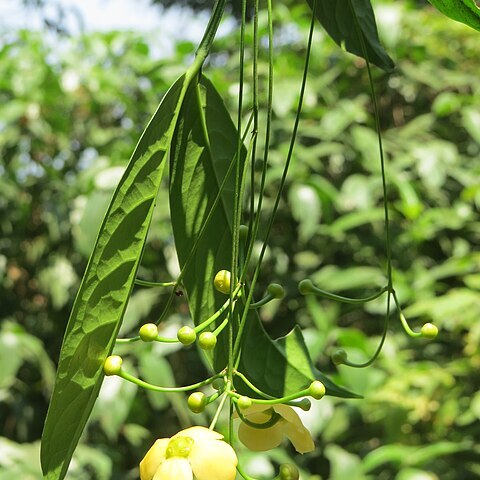Evergreen shrubs or small trees, glabrous. Leaves opposite, entire or crenulate; stipulate. Inflorescences axillary, cymose, 1-4 × dichotomous. Flowers bisexual, 4-merous; petals green-yellow, green-white, red, or purple. Disk fleshy, annular, 4-angled or lobed; stamens on disk; anthers obliquely dehiscent, latrorse. Ovary immersed in disk, 4-locular; ovules pendulous, 1 per locule. Capsule subglobose, leathery, pallid, cinereous-luteous or cinereous-brunescent, surface usually with densely squarrulose macula or smooth, loculicidally dehiscent. Seeds 1-4, ovoid or rounded, basal 1/3-1/2 covered by aril.

